Design a stunning book cover with the Illustration Generator. This guide helps you brainstorm, craft simple prompts, and assemble your perfect cover.
Creating a striking book cover doesn’t have to be a long, complicated process. Thankfully, there are practical ways to streamline the process so you can focus on bringing your creative vision to life without getting stuck in the technical details.
In this guide, we’ll walk you through the steps to design a beautiful book cover from scratch, sharing tips, techniques, and inspiration to help you craft a cover that grabs attention and resonates with your audience.
What’s inside?
- Know your book
- Brainstorm book cover ideas
- Start playing with prompts and variants
- Assemble your cover
- Book covers made with Illustration Generator
Know your book
Before designing, you need to fully understand the essence of your book. A cover should reflect more than just the title—it must capture the book’s tone, target audience, and overall vibe. Pinning down these elements will guide your design choices and ensure that your cover resonates with the right readers.
Here are a few key factors to consider:
- Genre’s visual language. Every genre has its own design norms. While you don’t need to stick rigidly to them, it’s good to know what readers expect. For example, a sci-fi novel might lean toward futuristic fonts and metallic hues, while a memoir could benefit from a minimalist, straightforward design. Understanding these conventions gives you a foundation to embrace or break the rules creatively.
- Target audience. Who will be reading your book? The design should appeal directly to them. Younger audiences might prefer bold, colorful designs, while more mature readers could be drawn to refined, subtle aesthetics. Also, think about where your book will be sold. Covers for digital platforms need to stand out in thumbnail form, while print book covers offer more room for intricate details.
- Mood and atmosphere. Your cover is the first hint of your book’s emotional tone. Is your book lighthearted and fun? Or is it dark and thought-provoking? The color palette, typography, and imagery should reflect this. A suspenseful thriller may benefit from a muted color scheme and sharp typography, while a feel-good romance might lean on soft pastels and whimsical fonts.
Taking the time to clarify these elements will make the rest of your design process much smoother. With a clear vision of your book’s genre, audience, and mood, you’ll be ready to start brainstorming unique book cover ideas that capture the spirit of the story.
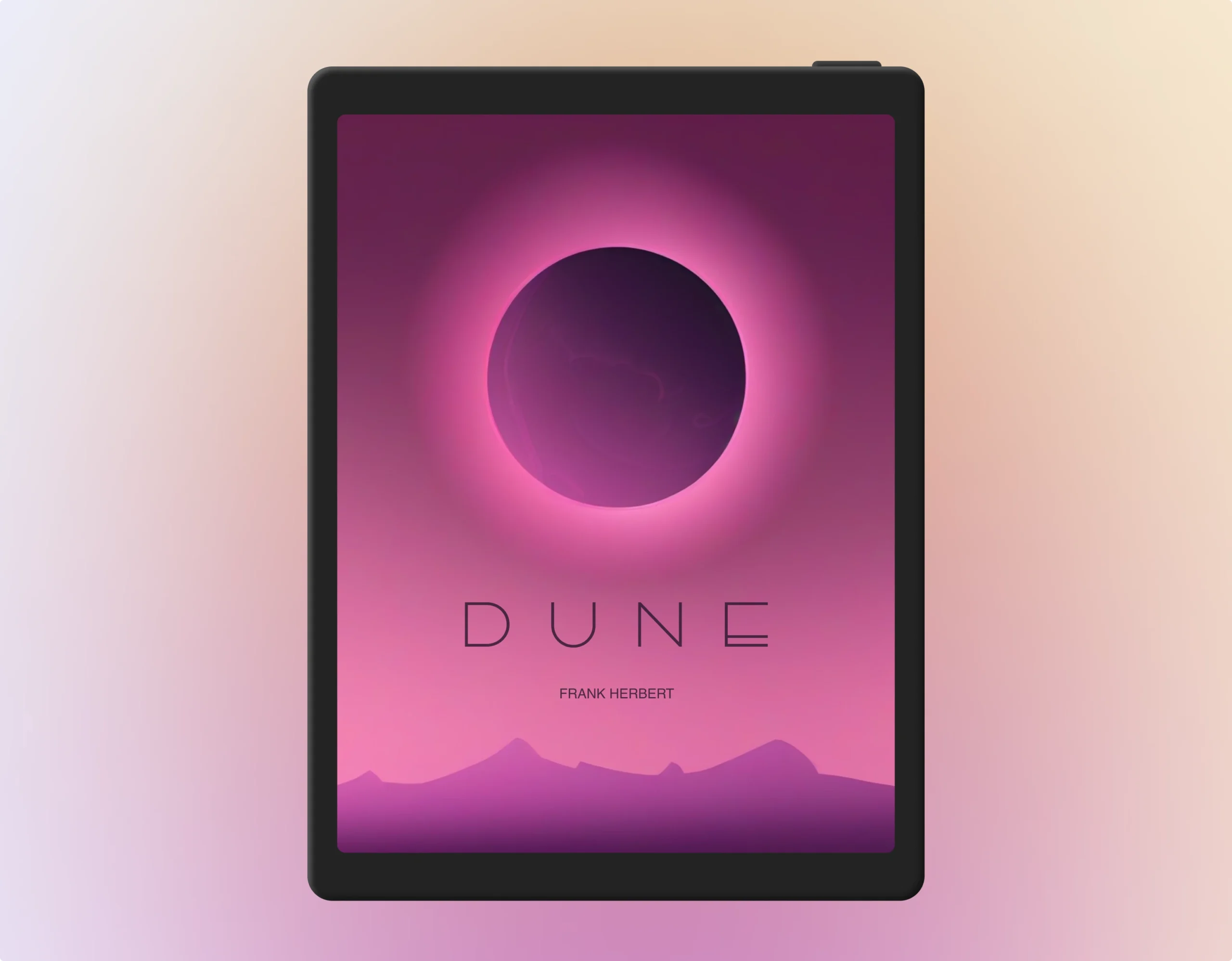
Brainstorm book cover ideas
Now that you understand your book’s genre, audience, and mood, it’s time to start brainstorming book cover ideas. This is the fun part, where you can explore different concepts and find the direction that best fits your book.
Here are a few tips to get your creative juices flowing:
- Research trending designs. Browse popular book covers within your genre to spot design trends. Look for patterns in typography, color schemes, and imagery.
- Sketch rough ideas. Even if you’re not a professional illustrator, quick sketches or rough mockups can help you visualize potential layouts and themes.
- Think outside the box. Don’t be afraid to get creative. Minimalist covers, abstract designs, or playful illustrations can help your book stand out.
- Mood boards. Gather images, colors, and fonts that reflect your book’s tone and theme. Tools like Pinterest can be useful for building inspiration boards that guide your design process.
Once you have a handful of ideas, you’re ready to create a mockup that brings them to life.
Start playing with prompts and variants
With your ideas ready, it’s time to bring them to life using the Illustration Generator. This tool works best with simple, concise prompts, quickly turning them into visually appealing illustrations. There’s no need for detailed descriptions—short prompts get the job done efficiently. The tool offers 10 unique illustration styles, with three specifically tailored for character-based designs, making it a great fit for covers that focus on human elements.
Here’s an example of how we used this process to design a cover:
Simple prompt, first style
We started with a simple prompt: “children in a boat.” Our first choice was the 3D Casual Life style. While the result was visually interesting, it felt a bit too plasticky for the tone of our book.

Switching styles for better results
We decided to switch the style to 3D Business, keeping the same prompt. The outcome was much closer to what we envisioned, with a more refined and realistic look.
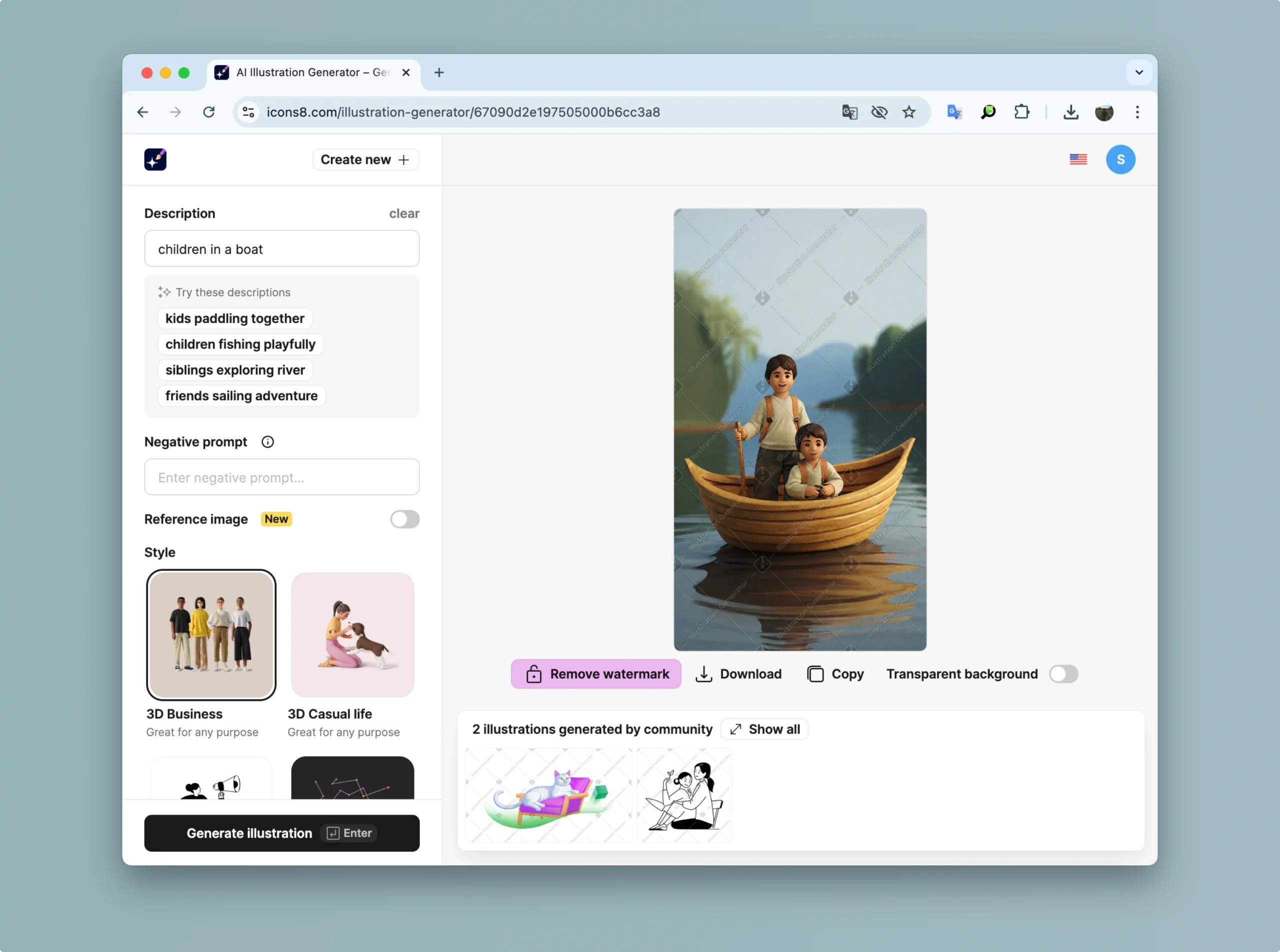
Perfecting the final version
To make it just right, we generated another version, fine-tuning the style within the 3D Business option. The final result captured the perfect balance of detail and tone, making it ideal for our book cover.

And here’s how the cover turned out:

Crafting simple and effective prompts
When using the Illustration Generator, keep your prompts short and clear. Describe only the essential elements needed for your cover. Here’s how to get the best results:
- Focus on key visuals. Instead of giving overly detailed descriptions, focus on the central element. For example, for a mystery novel, a prompt like “dark forest with fog” or “shadowy figure in a hat” works better than something too elaborate. The tool will handle the rest, pulling from its style options to generate the illustration.
- Leverage the illustration styles. Choose one of the ten styles that best fits your book’s tone. Whether you’re going for a flat, clean design or something more detailed, selecting the right style can bring your cover vision to life. If your book features characters prominently, try one of the three character-focused styles to create engaging visuals with expressive figures.
- Color and mood. Even with simple prompts, you can add small details like “stormy sea” or “calm sea at dawn” to fine-tune the mood and ensure the illustration fits your book’s theme.


Experimenting with prompts
Once you have a basic prompt, try generating a few different versions. The flexibility of the Illustration Generator allows you to tweak and iterate on your design in real time:
- Modify the elements. If the initial result isn’t quite right, tweak the prompt slightly—perhaps by changing the background or mood. For example, going from “girl on a hike” to “girl on a hike in the snowy mountains” can instantly change the tone and fit different genres.
- Switch illustration styles. Experiment with different illustration styles within the generator. A simple character prompt like “girl with a book” can look vastly different depending on the style you choose, from flat design to more textured, hand-drawn options.
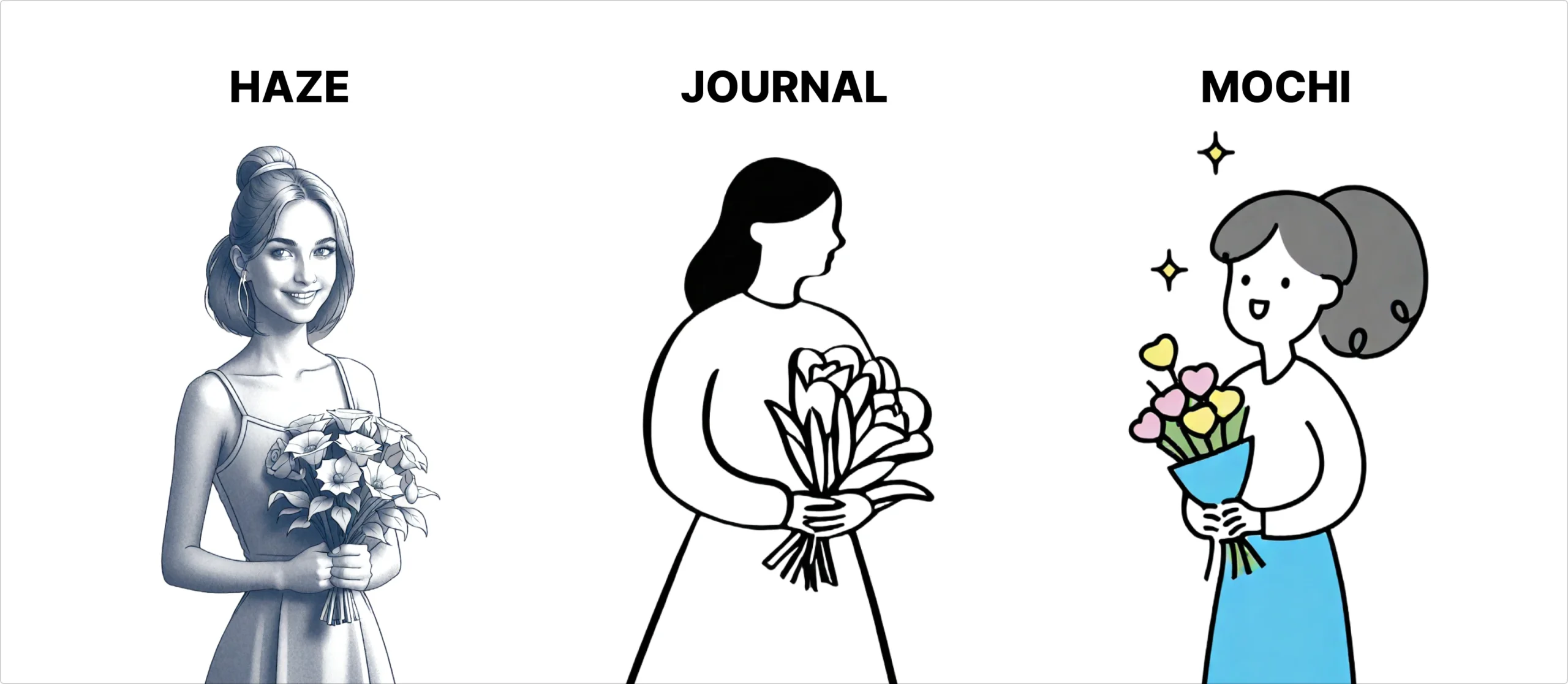
You can create beautiful illustrations in just a few clicks by keeping your prompts simple and using the right style. After you’ve generated the perfect visuals, you’re ready to assemble the final cover design. On to assembling your book cover!
Assemble your cover
Now that you’ve generated the illustrations, it’s time to assemble your book cover. This is where you combine the key elements—your visuals, typography, and layout—to create a polished, professional design.
Layout and composition
Start by deciding on the layout. Your book cover should have a clear hierarchy, with the title being the most prominent element, followed by the author’s name and any other relevant text (e.g., subtitles or taglines). Here are a few tips to guide your layout:
- Focus on the title. It should stand out and be easily readable, especially at smaller sizes (like an eBook thumbnail). Depending on your design style, position it at the top or center of the cover.
- Balance text and imagery. Make sure your visuals complement, rather than compete with, the text. Opt for simpler fonts and text placement to maintain clarity if your visual is busy or detailed.
- Leave room for the spine and back cover. Don’t forget about the spine and back cover if you’re designing a print book. Ensure continuity between the front, spine, and back cover designs, especially with colors and fonts.
Typography choices
The right typography can make or break your cover. Here are a few quick guidelines to ensure you’re making the best choice:
- Match the genre. For a lighthearted novel, a playful or handwritten font might work well. For a thriller, bold, modern fonts can add intensity. Consider pairing two fonts—a larger, decorative font for the title and a simpler, readable one for subtitles or the author’s name.
- Maintain readability. Even the most beautiful font won’t work if it’s difficult to read. Make sure the text is clear and contrasts well with the background. Adjust the colors or add shadows to make the text pop if needed.
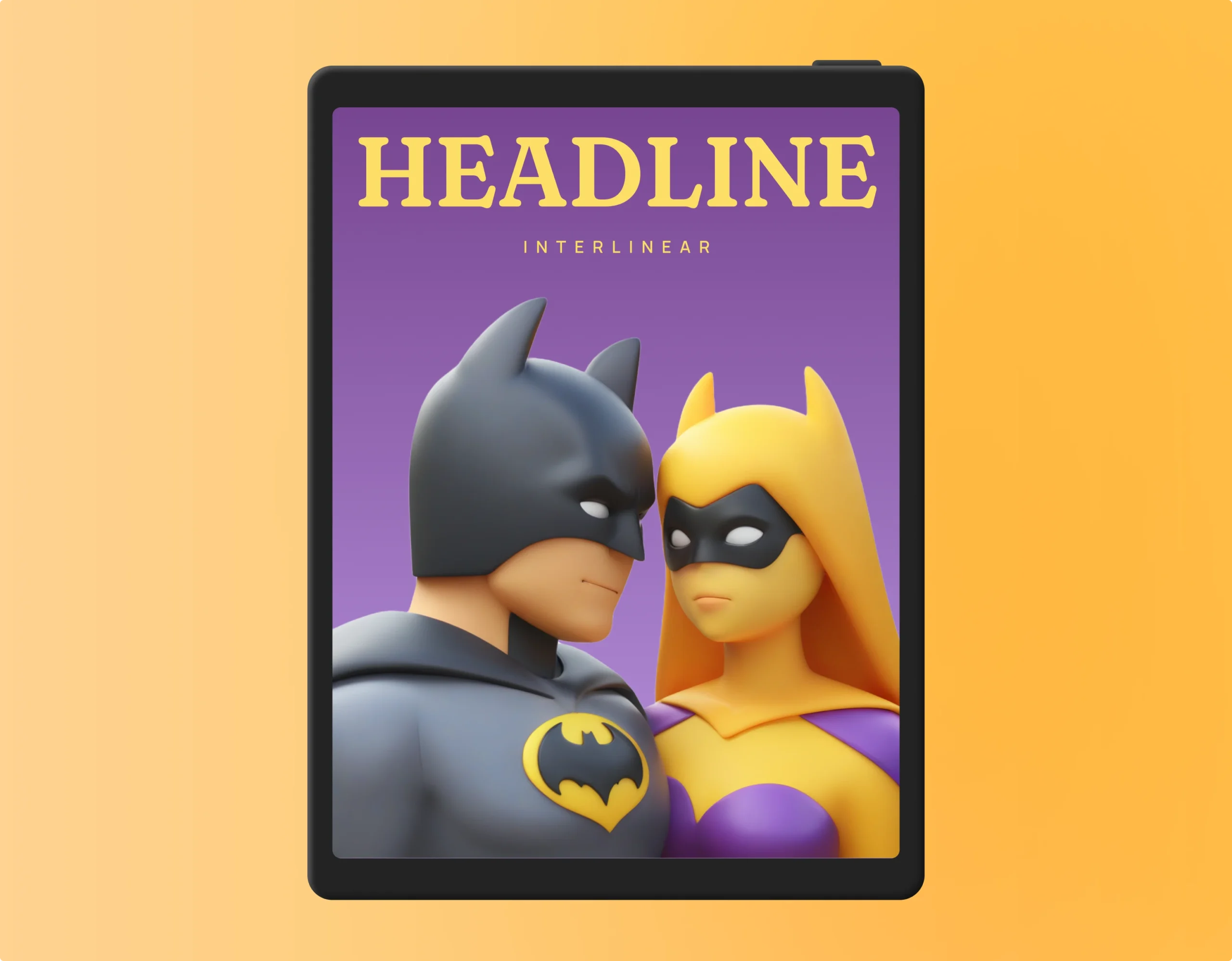
Adding final touches
Once your elements are in place, take some time to refine your design:
- Fine-tune colors. Make sure the colors work together to set the right mood. If needed, tweak the background color or adjust the shades in your illustration to better match the overall feel of the cover.
- Test different versions. Adjust the layout, font sizes, or color schemes of your cover to create a few variations. Compare these options to see which one looks best.
- Check for balance. Ensure enough white space to avoid a cluttered look. A well-balanced cover will guide the viewer’s eye naturally from the title to the imagery and the author’s name.
Your book cover is ready to go once you’re happy with the layout, text, and colors! Whether for print or digital, your cover will stand out with a professional, polished look that perfectly represents your story.
Book covers made with Illustration Generator
Now that you’ve created your own book cover, let’s explore some examples we designed using the Illustration Generator. These covers highlight the tool’s flexibility, offering both minimalist and detailed, character-focused designs. Each example is tailored to fit the book’s genre and mood.
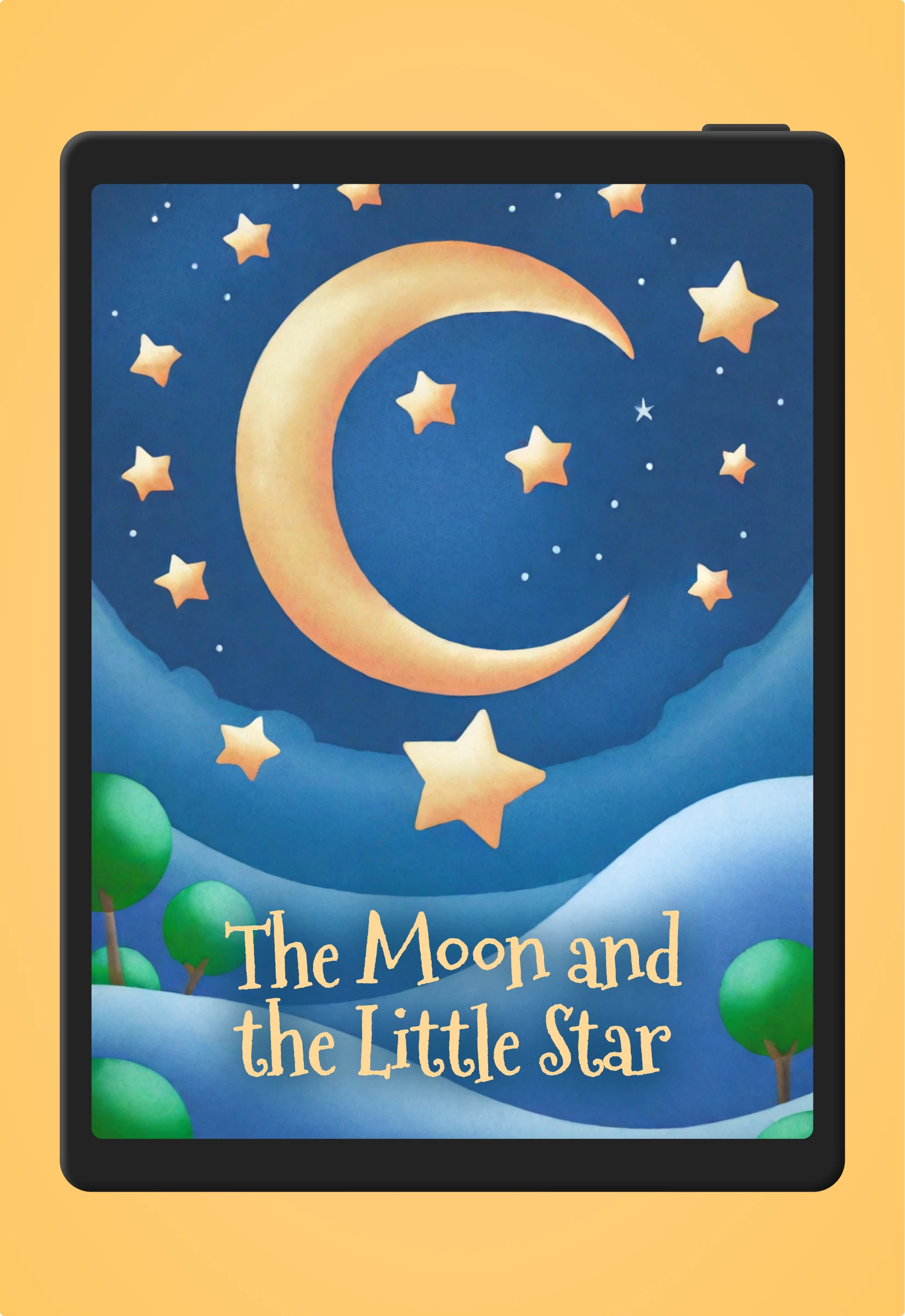
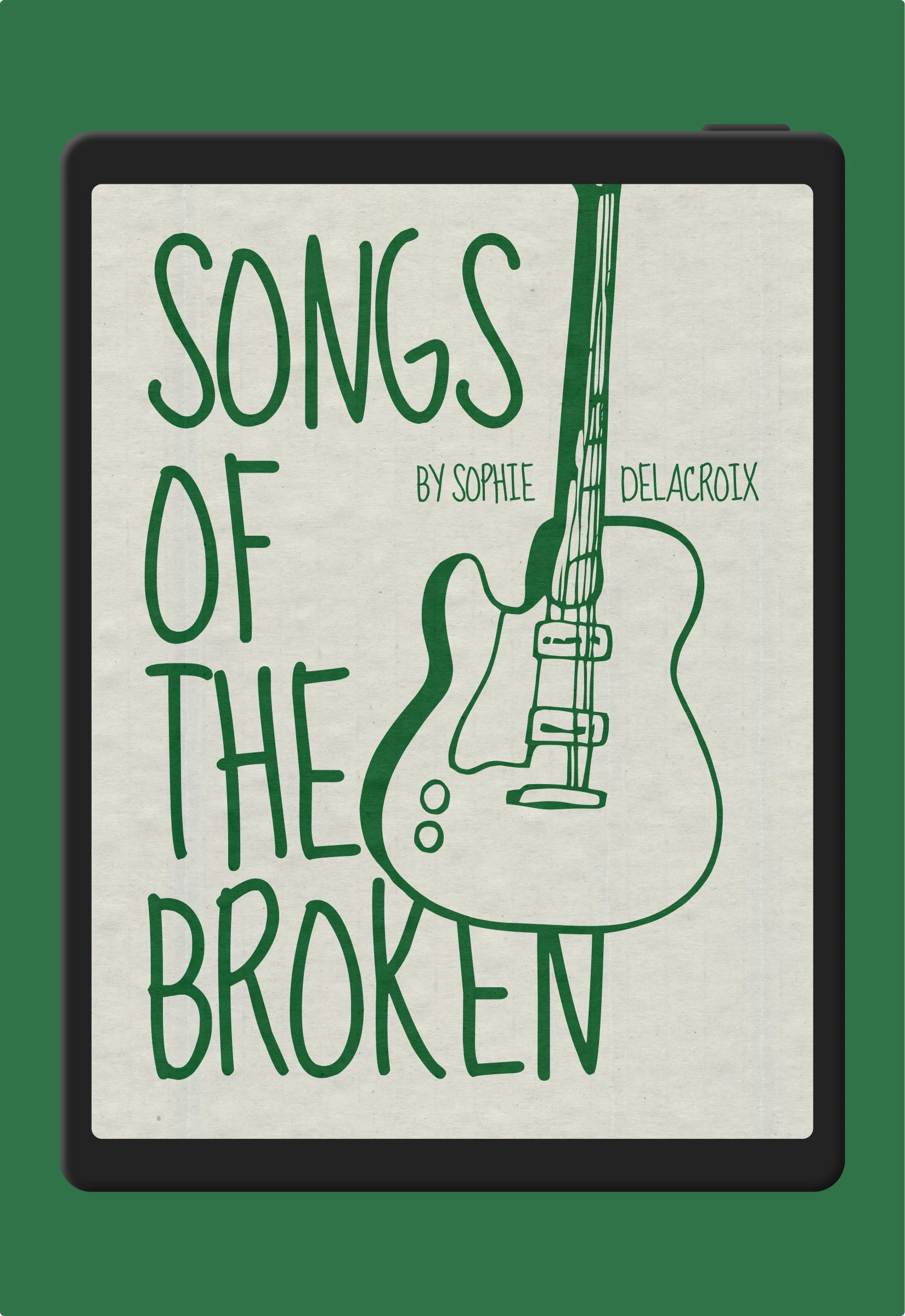




Wrapping up
Illustration Generator makes it easier to bring your book cover ideas to life, regardless of your design experience. By focusing on your book’s tone, brainstorming ideas, and using simple prompts, you can create a cover visually representing your story and connecting with readers.
From fantasy to non-fiction, this tool simplifies the design process, allowing you to concentrate on the creative elements. Experiment with different styles, refine your ideas and create a cover that truly captures the essence of your book.